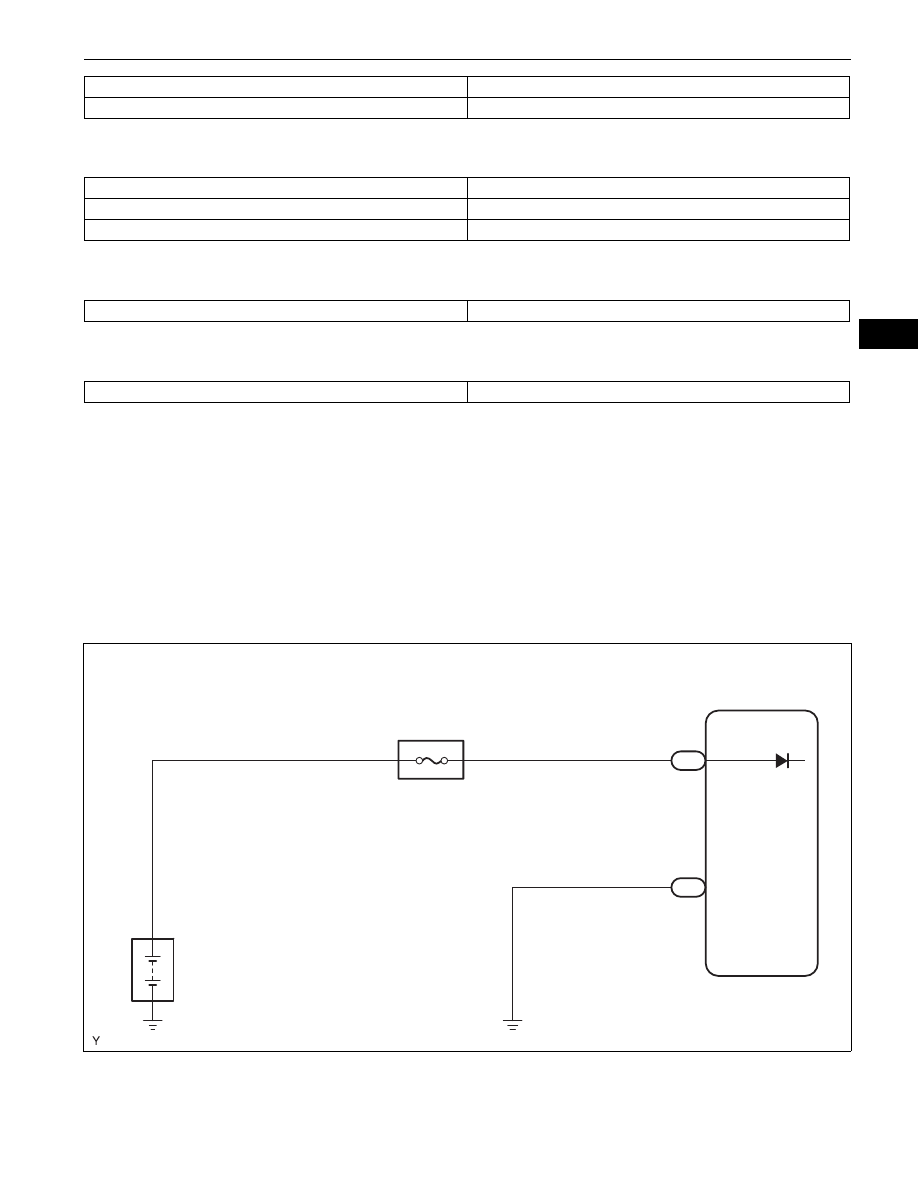Toyota FJ Cruiser (GSJ 10, 15 series). Instruction - part 85

1GR-FE ENGINE CONTROL SYSTEM – SFI SYSTEM
ES–295
ES
TYPICAL ENABLING CONDITIONS
TYPICAL MALFUNCTION THRESHOLDS
COMPONENT OPERATING RANGE
FAIL-SAFE
When this DTC, as well as other DTCs relating to ETCS (Electronic Throttle Control System)
malfunctions, is set, the ECM enters fail-safe mode. During fail-safe mode, the ECM cuts the current to
the throttle actuator off, and the throttle valve is returned to a 6
° throttle angle by the return spring. The
ECM then adjusts the engine output by controlling the fuel injection (intermittent fuel-cut) and ignition
timing, in accordance with the accelerator pedal opening angle, to allow the vehicle to continue at a
minimal speed. If the accelerator pedal is depressed firmly and gently, the vehicle can be driven slowly.
Fail-safe mode continues until a pass condition is detected, and the ignition switch is then turned OFF.
WIRING DIAGRAM
MIL Operation
Immediate
Sequence of Operation
None
Monitor runs whenever following DTCs not present
None
Electronic throttle actuator power
ON
Battery voltage
8 V or more
Electronic throttle actuator power supply voltage (+BM)
Less than 4 V
Throttle actuator power supply voltage
11 to 14 V
ETCS
Battery
ECM
+BM
ME01
2
1
7
E47
3
B2
A133422E02